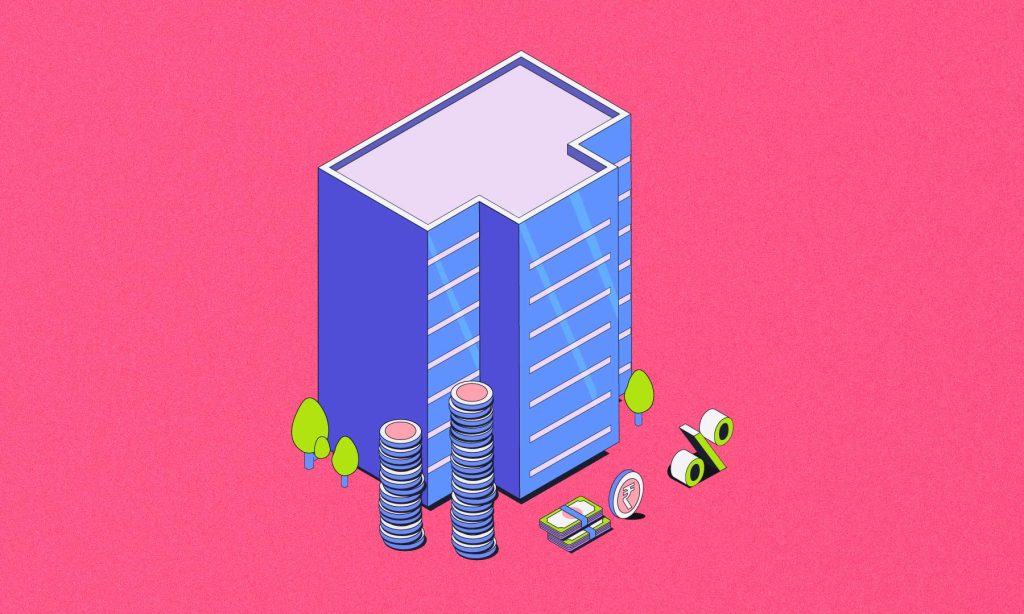You must have already heard of a fixed deposit and a recurring deposit. But have you heard of Non-Banking Financial Company (NBFC) fixed deposits? If you haven’t, you may be missing out! Because some NBFCs offer a better interest rate than banks. So, please read this to learn about them and how to pick one.
What are NBFC fixed deposits?
These fixed deposits are just like a bank fixed deposit. They can be held from one to several years and earn the holder interest earnings. Except NBFCs issue them.
Not all NBFCs can collect fixed deposits from the public. In India, regulators have allowed specific NBFCs to offer these schemes.
There are several top Non-Banking Financial Companies (NBFCs) in India—top regarding their market cap, Assets Under Management (AUM), and customer base. Some examples include Bajaj Finance Limited, HDFC, Mahindra & Mahindra Financial Services Limited (MMFSL), Shriram Transport Finance Company Limited (STFC), and L&T Finance Holdings Limited.
Features of NBFC fixed deposit schemes
Here is a five-point summary of some key features associated with NBFC fixed deposit schemes:
- Interest rates: These fixed deposits typically offer higher interest rates than banks. This is because NBFCs have to pay higher interest rates to attract investors.
- Ratings: It is important to note that the credit ratings of NBFCs vary and can be lower than that of banks. Therefore, it is important to check the credit rating of an NBFC before investing.
- Tenure: The tenure of NBFC fixed deposits ranges from 1 to 10 years.
- Minimum investment: The minimum investment for such fixed deposits is usually higher than that banks offer.
- Premature withdrawals: These fixed deposits may have stricter penalties for premature withdrawal than bank fixed deposits. Therefore, read the terms and conditions carefully before investing in an NBFC fixed deposit.
NBFC or a bank—which fixed deposit should you choose?
If you wish to compare a bank and an NBFC, starting with your financial goals is the right approach. If your primary goal is to maximize your money and you’re willing to accept some risks along the way, then an NBFC fixed deposit may be a good option. But do keep in mind that compared to a bank, there are four factors you should look at.
1. No demand deposits are allowed
Demand deposits are deposits that can be withdrawn on demand. Savings and current account deposits are demand deposits. NBFCs are not allowed to accept demand deposits. Therefore, NBFC fixed deposits have a fixed tenure that ranges from 1 to 5 years.
2. Higher interest rates
NBFC fixed deposits usually offer higher interest rates than banks to attract investors. The lack of backing from the government makes these deposits less attractive, so NBFCs try to compensate by offering these higher rates.
3. Flexibility
These corporations offer more flexibility regarding the fixed deposit tenure and interest rate than banks. For instance, the tenure options of NBFCs range from 1-10 years, while some may offer variable interest rates linked to market conditions.
4. Fixed deposit rationale
The rationale for investing in a fixed deposit is to earn a fixed rate of return on investments. However, with NBFCs, unlike bank FDs, the government does not guarantee the maintenance of reserved ratios. This means that NBFC FDs go a little against the rationale of FDs.
An NBFC fixed deposit thus makes sense to some categories of individuals. If you have a significant amount of money lying around and you are sure that you can remain invested for the deposit term, then an NBFC makes for a good choice. A few well-to-do senior citizens, too, may find an NBFC’s higher interest rate useful.
How to pick the right NBFC for a fixed deposit
Consider the factors discussed below to pick the right NBFC for a fixed deposit. It is important to evaluate them carefully and choose an NBFC that meets your investment goals.
1. Experience
User experience is an important factor to consider. Look for an NBFC with a user-friendly website and easy access to customer support. You may also want to consider reviews and customer feedback to assess the overall experience.
2. Security
Choosing an NBFC that’s financially stable and has a good track record is important. You can check the company’s credit rating via agencies such as CRISIL, ICRA, and CARE.
3. Flexibility
Look for an NBFC that offers flexible options for tenure, interest rate, and investment amount. This will allow you to choose an option that best fits your investment goals and preferences.
4. Rate of return
Compare the interest rates of fixed deposits by various NBFCs. However, remember that higher interest rates may come with higher risk. So also, evaluate the credit rating and financial stability of the NBFC before making a decision.
5. Ratings
Check the credit rating of the NBFC from agencies such as CRISIL, ICRA, and CARE. These agencies rate the NBFCs based on their assessment of the NBFC’s financial strengths and stability. A high credit rating indicates a lower risk of default.
Which NBFC is best for fixed deposits in 2023?
With nearly 10,000 NBFCs operating across India, selecting the fixed deposit scheme of one is challenging. But it’s always good to base your investment decisions on your goals and tonnes of research.
Gather all the information on the different NBFCs that offer fixed deposit schemes. Look for NBFCs with high credit ratings. Compare interest rates, but remember that higher interest rates come with higher risk.
Customers often forget to consider the aspect of customer experience. This is a mistake. NBFCs that are user- and customer-friendly will serve you better.
Of course, you can always consult a financial advisor for personalized guidance on your investment options.








